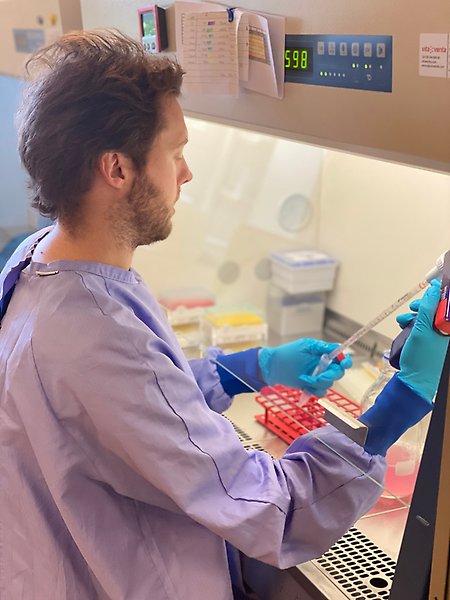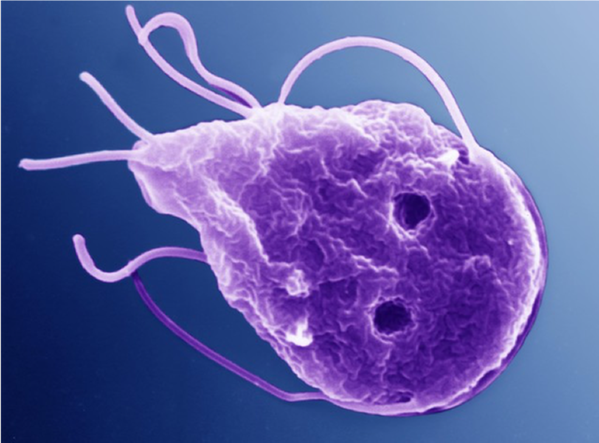Understanding Metronidazole Resistance
Metronidazole is an antibiotic used to treat very different anaerobic pathogens. Both eukaryotes and prokaryotes are readily treatable by this antibiotic. The drug is delivered as prodrug and activated by several oxidoreductases and reducing factors in cells it enters. In aerobic environments oxygen immediately restores the drug to its prodrug form, explaining selectivity.
Resistance towards this antibiotic is interesting for two reasons:
- Resistance levels have been low for a long time since the introduction of metronidazole in the 1960s but now is increasing
- There are no clear genetic patterns associated with resistance in several target organisms
In my first project we want to understand how metronidazole resistance is achieved in two model-pathogens. The first of those is Helicobacter pylori, a gram-negative bacterium causing both acute intestinalis problems and gastric cancers. While there are some candidate genes that are often mutated, this is not mandatory. Hence, we will analyze the gene expression of collecton of metronidazole resistant strains and compare it with gene expression as observed in metronidazole susceptible strains. In combination with the genetical background we hope to discover which changes are needed to achieve metronidazole resistance.

Student Sasha Krakovka working in the lab
The second pathogen is Giardia intestinalis, a intestinalis parasite causing severe diarrhea, vomiting as well as long term allergies and chronic fatigue. In this organism no clear mutations linked to metronidazole resistance have been described. This prompted researchers to look into gene expression and protein expression data. So far, analysis on any level is limited to a small number of strains. We expand this number with additional datasets on both levels and include a revertant into the analysis to show which changes are really needed for this parasite to become resistant.
Overall, we hope to gain insight on what made metronidazole a successful antibiotic and why mutations of single genes have not been observed as frequently as for other antibiotics. Our results can also be used in future diagnostic methods and drug development.
Alternatives to metronidazole in Giardia intestinalis
In recent years metronidazole resistance levels in many of the targeted pathogens are rising. G. intestinalis is no exception with treatment failure levels of 20-40% being reported. Most of the second line drugs used for treatment are from the same class of antibiotics as metronidazole, the nitroimidazoles or from the related benzimidazole class. This might explain why cross-resistance is commonly observed. The remaining drugs available for treatment are second-lined due to their side effects.

Giardia intestinalis
In my second project we have used a genomics-based approach to identify metabolic functions that have been changed between pathogen and the human host and can therefore be exploited by drugs only targeting the parasite. We discovered that G. intestinalis has a very limited nucleotide metabolism that is targetable with nucleotide analogues. Nucleotide analogues are used in treating viral infections and cancer for a long time. By repurposing one or several of those a new antigiardial drug can be brought to the market fast and cheap. Further experiments showed, that these analogues are effective in both killing the parasite in vitro and treating the infection in in vivo models. While metronidazole is good at treating the active infection, it does not prevent transmission to new host efficiently. Therefore, we tested whether these nucleotide analogues could hinder transmission and can confirm that they do so.
Related published research
- Ansell, Brendan R.E., Louise Baker, Samantha J. Emery, Malcolm J. McConville, Staffan G. Svärd, Robin B. Gasser, and Aaron R. Jex. 2017. “Transcriptomics Indicates Active and Passive Metronidazole Resistance Mechanisms in Three Seminal Giardia Lines.” Frontiers in Microbiology. https://doi.org/10.3389/fmicb.2017.00398.
- Ansell, Brendan R.E., Malcolm J. McConville, Louise Baker, Pasi K. Korhonen, Samantha J. Emery, Staffan G. Svärd, Robin B. Gasser, and Aaron R. Jexa. 2016. “Divergent Transcriptional Responses to Physiological and Xenobiotic Stress in Giardia Duodenalis.” Antimicrobial Agents and Chemotherapy.
- Ansell, Brendan R.E., Malcolm J. McConville, Showgy Y. Ma’ayeh, Michael J. Dagley, Robin B. Gasser, Staffan G. Svärd, and Aaron R. Jex. 2015. “Drug Resistance in Giardia Duodenalis.” Biotechnology Advances.
- Doorakkers, Eva, Jesper Lagergren, Lars Engstrand, and Nele Brusselaers. 2018. “Helicobacter Pylori Eradication Treatment and the Risk of Gastric Adenocarcinoma in a Western Population.” Gut.
- Emery, Samantha J., Louise Baker, Brendan R.E. Ansell, Mehdi Mirzaei, Paul A. Haynes, Malcom J. McConville, Staffan G. Svärd, and Aaron R. Jex. 2018. “Differential Protein Expression and Post-Translational Modifications in Metronidazole-Resistant Giardia Duodenalis.” GigaScience.
- Storskrubb, Tom, Pertti Aro, Jukka Ronkainen, Karin Wreiber, Henry Nyhlin, Elisabeth Bolling-Sternevald, Nicholas J. Talley, Lars Engstrand, and Lars Agréus. 2006. “Antimicrobial Susceptibility of Helicobacter Pylori Strains in a Random Adult Swedish Population.” Helicobacter.
